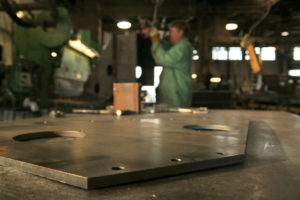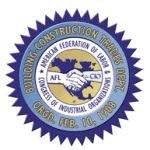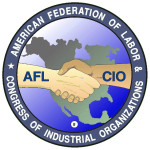ABOUT LOCAL 399
SMART Local 399 is a part of the Sheet Metal arm of SMART, formerly the Sheet Metal Workers International Association. Local 399 was founded in 1935 by 37 sheet metal workers employed at the Charleston Naval Shipyard in Charleston SC. From those humble beginnings, the local has expanded in both membership and influence. Today, Local 399 has over 450 members and covers the entire state of South Carolina.
What is Sheet Metal
The term “sheet metal” refers to any metal that can be formed into flat pieces of varying thicknesses. Using specialized tools, sheet metal workers cut, roll, bend, and shape these pieces to make a wide variety of objects such as ductwork, airplane wings, car bodies, refrigeration units, medical tables and storage units, building facades steel sheets, tubing, and signs.
Local Projects
Our members have worked on many of the projects that make South Carolina the great state it is, such as:
- University of South Carolina
- The College of Charleston
- Medical University of South Carolina
- Savannah River Site
- VC Summers Nuclear Power Station
- BMW, Volvo and Mercedes
- MNK3 Data Center
And that’s just to name a few. Local 399 is its members, and its members are part of the community. We are part of the fabric that makes this place we live in so special, and we work to continue that legacy for generations to come.

UNIONS AND AFFILIATIONS
A Union is a group of workers that collectively bargain with their employers to achieve better wages, benefits and working conditions than they would otherwise be able to achieve independently. Generally speaking, the constituents of a labor Union perform similar types of work within the same trade under similar working conditions and share a common interest. Large national unions are actually a collective of local unions, which is the basic unit of workers within a geographic area. The size of the area and the amount of workers within it may vary: some locals have several hundred members to encompass an entire state while others have several thousand members to service just one metropolitan area. Regardless of the size, the principle of the operation is the same from local to local: a local union is the people in it. It is a self-governed unit of workers who are banded together for collective strength. The company, the businessman, the doctor and just about every known profession has its own organization. The Chamber of Commerce, Manufacturers Associations, Doctors Associations, Bankers, Lawyers, Accountants, Insurance Agencies, Management Associations, Energy Groups and countless numbers of likeminded business groups all seek to achieve the same goal: TO ACHIEVE STRENGTH IN NUMBERS.
The local union is exactly the same thing for the worker.
Union advantage
● Wages
● Safety
● Training
Business Advantage
● Manpower resource
● Productivity
The AFL-CIO (American Federation of Labor) is the parent organization of labor. It is a “Union of Unions” in a manner of speaking, as it is comprised of a multitude of different national and international Unions.
The AFL was founded in 1886 by a group of allied craft-unions seeking to enhance their collective influence. In 1935, ten industrial unions were expelled from the AFL to form the CIO (Congress of Industrial Organizations). These organizations were reunited with the AFL in 1955 to form the AFL-CIO, the organization that now represents the vast majority of the unionized workforce in the United States.
The AFL-CIO now houses 56 member organizations, representing over 12 million men and women. The values of solidarity and unity still serves the same purpose today as it served in 1886: that working men and women should be provided a decent paycheck and working conditions.
 The Building Trades (The Building and Construction Trades Department) is an association of trade-unions under the AFL-CIO umbrella that represent craftsmen in the building and construction industry. There are 14 affiliate organizations within the Building Trades Department which represent workers in the following industries: Boilermakers, Bricklayers, Cement Masons, Electricians, Elevator Constructors, Insulators, Iron Workers, Laborers, Operating Engineers, Painters, Pipefitters, Roofers, Sheet Metal Workers and Teamsters.
The Building Trades (The Building and Construction Trades Department) is an association of trade-unions under the AFL-CIO umbrella that represent craftsmen in the building and construction industry. There are 14 affiliate organizations within the Building Trades Department which represent workers in the following industries: Boilermakers, Bricklayers, Cement Masons, Electricians, Elevator Constructors, Insulators, Iron Workers, Laborers, Operating Engineers, Painters, Pipefitters, Roofers, Sheet Metal Workers and Teamsters.
The Building and Construction Trades Department was founded on February 10th, 1908 by a mandate in the constitution of the AFL-CIO. The extraordinary measure of founding a department of affiliated organizations within the AFL was necessary due to multiple unionized crafts being present on the same construction sites.
The Building Trades are a unique department within the AFL-CIO. They are so unique that they are governed under a separate clause of the National Relations Labor Act (aka NLRA: the federal law which governs labor organizations).
Most of the unions within the AFL-CIO operate under Section 9(a) of the Act. Section 9(a) requires that employees show a majority interest and unionize their workplace through a NLRB certified election. This is referred to as “Bottom-Up”.
Conversely, the Building Trades Unions operate under Section 8(f) of the Act. This section is referred to as “Instant Recognition” or “Top-Down” recognition. Many contractors in the construction industry recognize the value of the skill the building trades unions provide to the industry and enter into an agreement with the trade union(s) for labor. This level of skill is achieved through the unparalleled amount of money the trades spend on training its members. The building trades utilize the “Apprenticeship Model” of training. Most members in the building trades enroll into a formal apprenticeship training model which is recognized and certified through the U.S. Department of Labor.
On January 25th, 1888, 11 delegate local Unions from 5 states joined together in solidarity to form the Tin, Sheet Iron and Cornice Workers’ International Association. After 125 years of growth, the Sheet Metal Workers International Association joined with the United Transportation Union (the largest operating railroad union in North America) to form the Sheet Metal, Air, Rail and Transportation Union, also known as SMART.
Today, SMART consists of 216,000 members in 700 locals and councils located all over the United States and Canada. An affiliate of the AFL-CIO, SMART is one of 14 delegates that make up the Building and Construction Trades Department of that organization. Members perform a diverse portfolio of work, including: HVAC, testing and balancing, shipbuilding, railroads, among others.
SMART members are unique in the construction industry as the only trade that designs, manufactures and installs our own products. These skilled craftspersons take ordinary types of flat metal and make them into specialized products for various duct and ventilation systems, as well as architectural and specialized metal fabrication. Members of the trade are proud of its special distinction: They not only build; they create.


